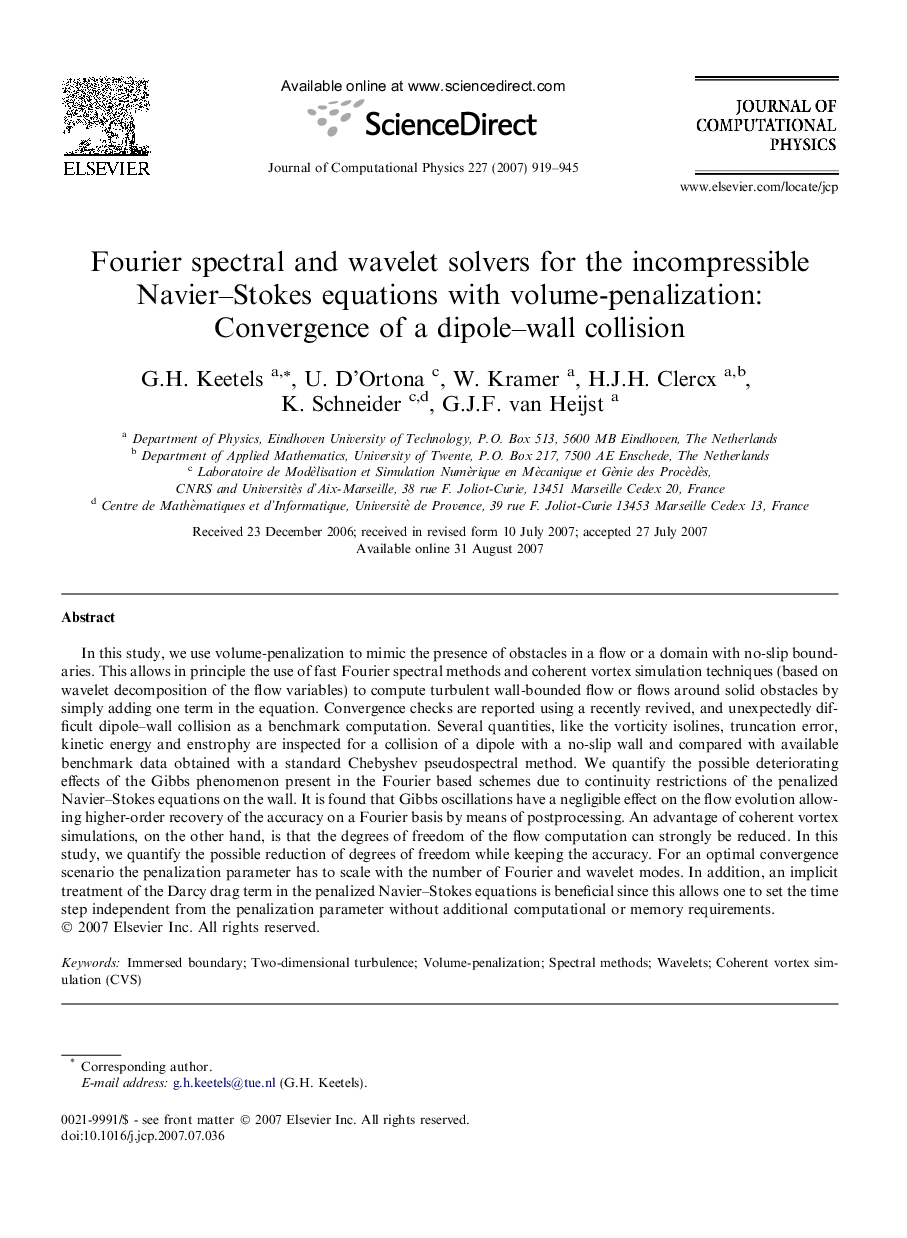| کد مقاله | کد نشریه | سال انتشار | مقاله انگلیسی | نسخه تمام متن |
|---|---|---|---|---|
| 521363 | 867765 | 2007 | 27 صفحه PDF | دانلود رایگان |

In this study, we use volume-penalization to mimic the presence of obstacles in a flow or a domain with no-slip boundaries. This allows in principle the use of fast Fourier spectral methods and coherent vortex simulation techniques (based on wavelet decomposition of the flow variables) to compute turbulent wall-bounded flow or flows around solid obstacles by simply adding one term in the equation. Convergence checks are reported using a recently revived, and unexpectedly difficult dipole–wall collision as a benchmark computation. Several quantities, like the vorticity isolines, truncation error, kinetic energy and enstrophy are inspected for a collision of a dipole with a no-slip wall and compared with available benchmark data obtained with a standard Chebyshev pseudospectral method. We quantify the possible deteriorating effects of the Gibbs phenomenon present in the Fourier based schemes due to continuity restrictions of the penalized Navier–Stokes equations on the wall. It is found that Gibbs oscillations have a negligible effect on the flow evolution allowing higher-order recovery of the accuracy on a Fourier basis by means of postprocessing. An advantage of coherent vortex simulations, on the other hand, is that the degrees of freedom of the flow computation can strongly be reduced. In this study, we quantify the possible reduction of degrees of freedom while keeping the accuracy. For an optimal convergence scenario the penalization parameter has to scale with the number of Fourier and wavelet modes. In addition, an implicit treatment of the Darcy drag term in the penalized Navier–Stokes equations is beneficial since this allows one to set the time step independent from the penalization parameter without additional computational or memory requirements.
Journal: Journal of Computational Physics - Volume 227, Issue 2, 10 December 2007, Pages 919–945